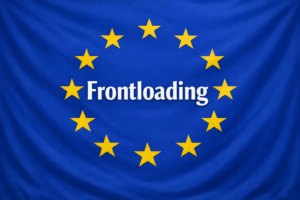Headquarters: Svetog Nauma 7, 11000
Office address: Đorđa Vajferta 13, 11000
Phone:: +381 11 4529 323

Since the authorities in Belgrade shifted expectations from the end of January and beginning of February to the end of the year regarding the opening of a new cluster, the focus of the discussion has moved toward the possibility of accessing additional funds within the framework of the New Growth Plan (NGP). Although the regulation on this financial mechanism of the Union was adopted nearly a year ago, none of the Western Balkan countries have had access to the funds until recently. Since Serbia has just ratified all the agreements necessary for drawing funds from the NGP, there are signals that the moment is approaching when Serbia as well will receive its first tranche of over 100 million euros.
In the midst of the current crisis in Serbia, some might wonder—why now? The answer is the following: once the green light is given by the European Commission, it will be made clear that this represents only 7% of the total funds allocated to Serbia—in accordance with the regulation that established the NGP. What makes this initial amount distinctive is that it constitutes pre-financing, which is not tied to the fulfillment of reform steps. The underlying rationale is to ensure that beneficiaries have immediate access to “start-up funding,” enabling them to launch the first stages of reform without delay —both to address the current societal crisis and to continue Serbia’s path toward EU membership.
The fact that the Union has tied the fate of the remaining 93% of the funds to concrete reform steps reflects a different outlook on enlargement policy—something that is commonly referred to as gradual integration.
How did we arrive at this new approach to enlargement?
In the wake of the war in Ukraine, the EU has opted to adapt its approach to enlargement policy. Learning from its experience with the Western Balkans—where only Croatia joined in 2013, leaving the other six partners behind—and facing a growing list of candidate countries, it recognised the need to move beyond its standard practice. By abandoning its previous binary approach, in which a country was either a member of the club or not, the EU has embraced gradual integration as the preferred path forward, with European Council June 2022 Conclusions.
Despite it has become mainstream today, this concept was not born overnight but has been shaped by the hard work of think tanks that recognised the necessity to adapt the enlargement policy to the new realities and needs. Notably, the European Policy Centre (CEP-Belgrade) and the Centre for European Policy Studies (CEPS-Brussels) have long advocated for gradual integration, which was formally structured through the Staged Accession Model in 2021. Other think tanks have also contributed with various ideas, including sectoral integration and single market inclusion. While these approaches differ in detail, they share a fundamental principle: a merit-based, incentive-driven accession process that ensures mutual benefits for both candidate countries and the EU. By providing a well-managed and predictable enlargement strategy, gradual integration allows for deeper cooperation and integration even before full membership is achieved.
In practice, the EU has pursued gradual integration by incorporating various elements from different think tanks’ proposals. The most visible and direct manifestation of this approach took shape in the 2023 New Growth Plan (NGP) for the Western Balkans. The Moldovan NGP, announced a year later, followed the same structure. As the foundation of the Reform and Growth Facility, the NGP has called for increased funding while conditioning access on reform progress—aligning with the Staged Accession Model in both logic and proposed funding levels. In addition, mirroring other think tank proposals, the NGP also emphasises the economic benefits of granting partial access to the EU Single Market while outlining possibilities for sectoral integration—both contingent on the degree of acquis alignment in specific sectors. All these efforts are supposed to enable closer economic integration of the candidates into the EU, while decreasing the socioeconomic gap and encouraging the adoption of reforms needed for membership.
Is There Room for Further Redefining the Approach?
Looking ahead, the EU’s approach to gradual integration still lacks an important component – political integration. As the Staged Accession Model highlights, there is a need to provide institutional incentives by granting candidate countries access to EU institutions—particularly the EU Council—in a structured and predictable, gradual and merit-based manner. By allowing candidates to practice membership before formal accession—albeit without voting rights and in line with existing rules—these institutional incentives were intended to enable them to engage in discussions with member state officials on mainstream EU policy issues, socialise with their EU peers, and gradually develop their administrations’ capacities to assume membership responsibilities. Advancing on this front in the coming period will be paramount to demonstrating that gradual integration can serve as a key tool for better preparing candidates for membership and ensuring European strategic autonomy. The idea behind this approach is to provide additional incentives for countries to embark on reforms. Given the current crisis in Serbia, such incentives and a more active engagement from the Union are very much needed.
Originally published on EUupravozato.
The abridged version is available here.